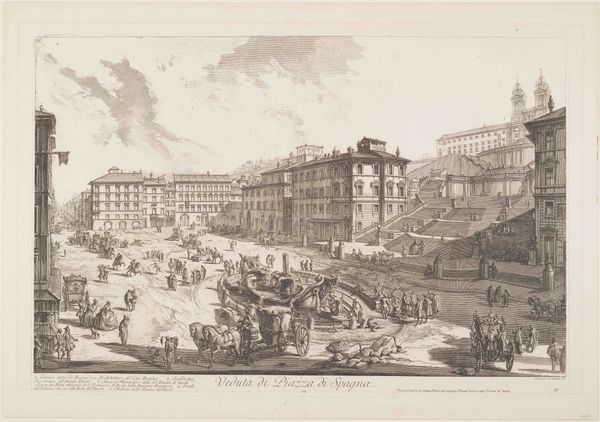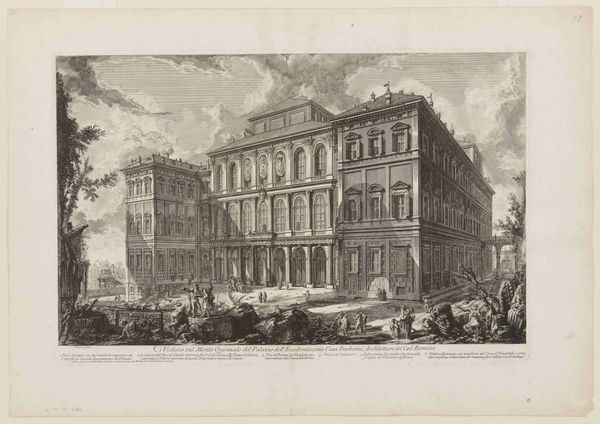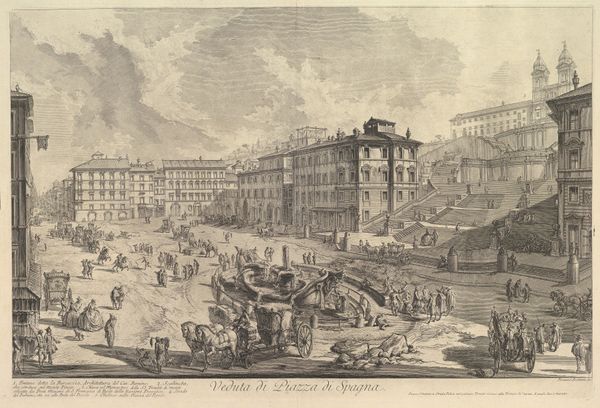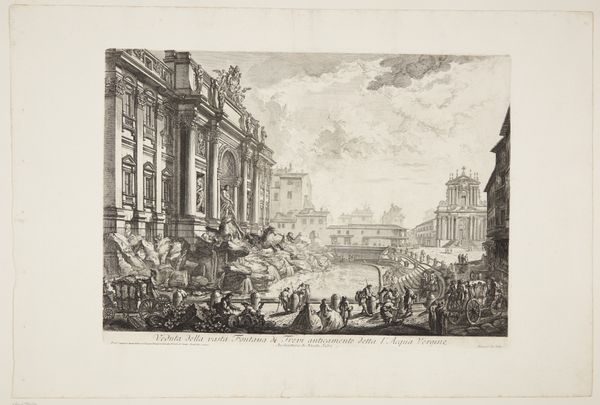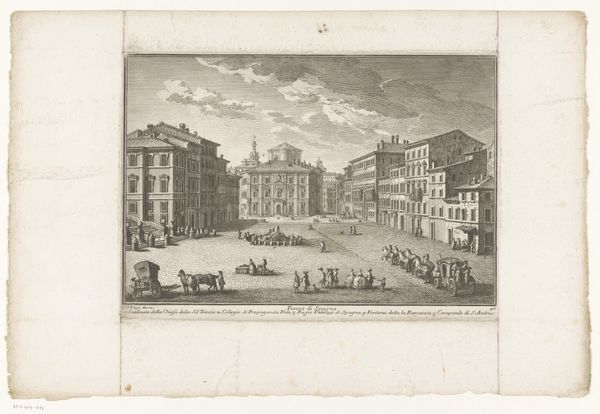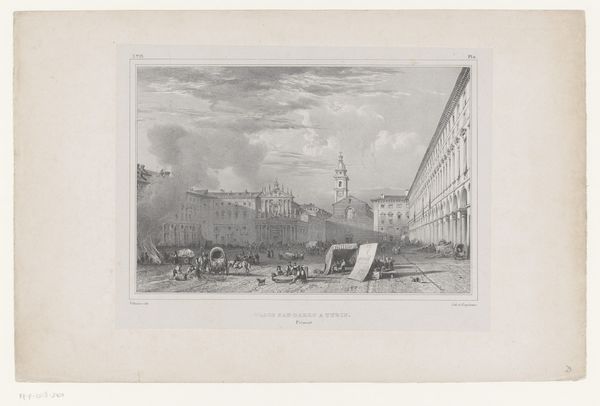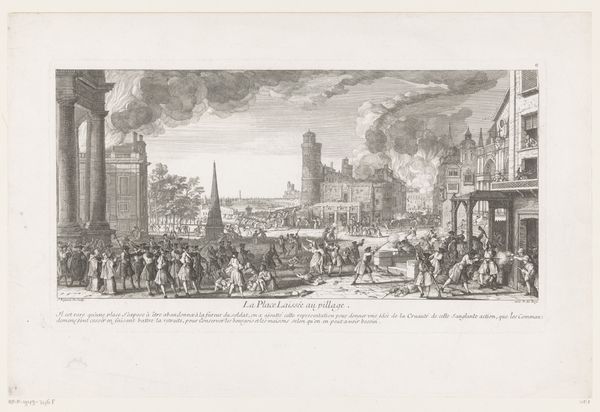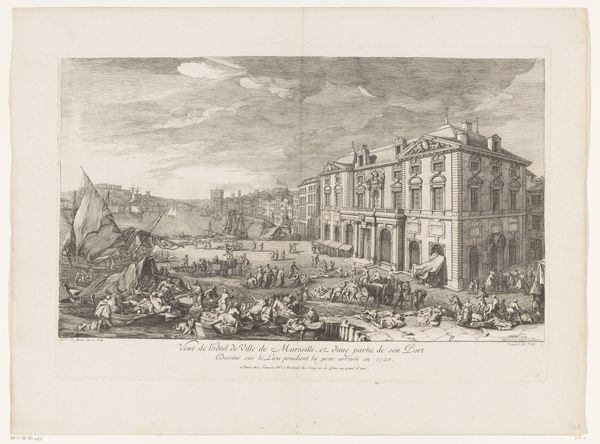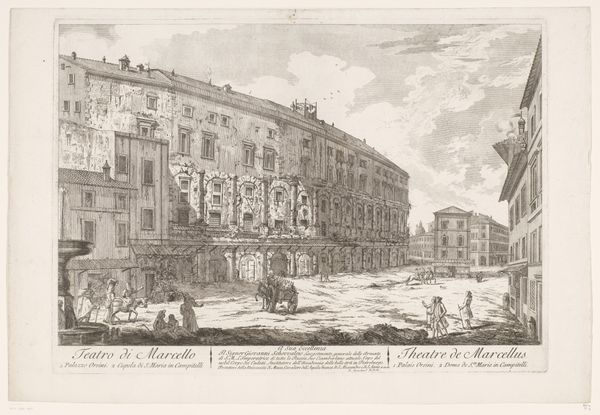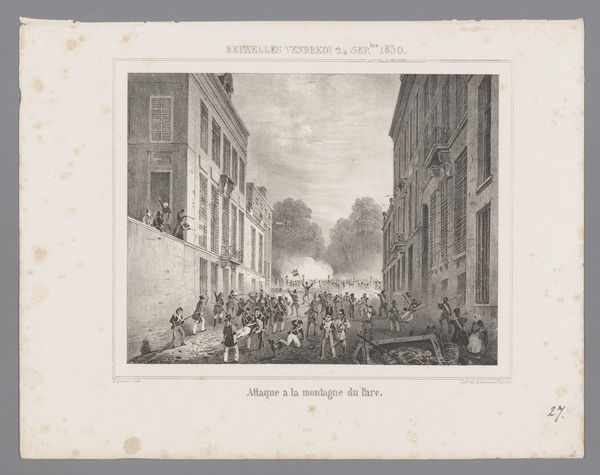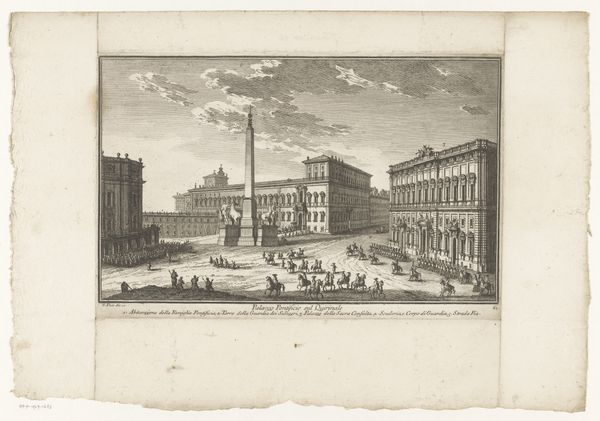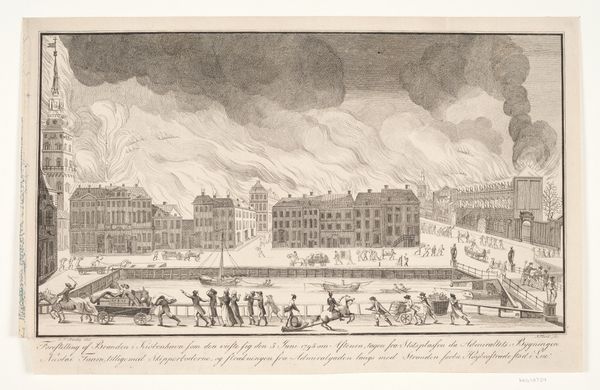
etching
#
baroque
#
etching
#
etching
#
cityscape
#
history-painting
Dimensions: height 379 mm, width 552 mm
Copyright: Rijks Museum: Open Domain
Editor: This etching, “Pestslachtoffers op de Cours de Marseille,” or "Plague Victims on the Cours de Marseille," by Jacques Rigaud, dated 1720 and housed at the Rijksmuseum, it’s pretty striking. It definitely captures a sense of devastation in what seems like a public space. What kind of narrative do you think Rigaud is trying to convey, looking at this from a historical point of view? Curator: It’s important to recognize that Rigaud created this etching in response to the Great Plague of Marseille, which was a pivotal moment in the city’s social and political history. What does the setting – this wide avenue – suggest about the public role of suffering during this time? Editor: Well, seeing the Cours de Marseille filled with victims, it kind of suggests that the plague wasn’t a private tragedy; it was a very public event shaping the city’s identity, doesn’t it? Curator: Exactly. Rigaud is consciously presenting the plague as a collective experience, impacting the very fabric of urban life. Think about how the print circulates: how does that dissemination impact broader society? What stories get told, and by whom? Editor: It feels like he's commenting on how public health crises get managed - or mismanaged. Is it also about how the elites might have responded, or maybe *didn't* respond effectively? Curator: Precisely. Who is absent from this image? Rigaud, in my opinion, leaves us with unanswered questions, hinting at the sociopolitical dimensions inherent in such widespread suffering. Editor: I see, so looking at it now, the artwork seems less like just a scene of suffering and more of a commentary about the public role of crisis. It definitely offers an insightful historical perspective. Curator: Right, and art like this serves as a potent reminder of how societal narratives shape our understanding of historical events. Hopefully, it leads us to further ask questions about the intersection of social responsibility, public art, and history.
Comments
No comments
Be the first to comment and join the conversation on the ultimate creative platform.
